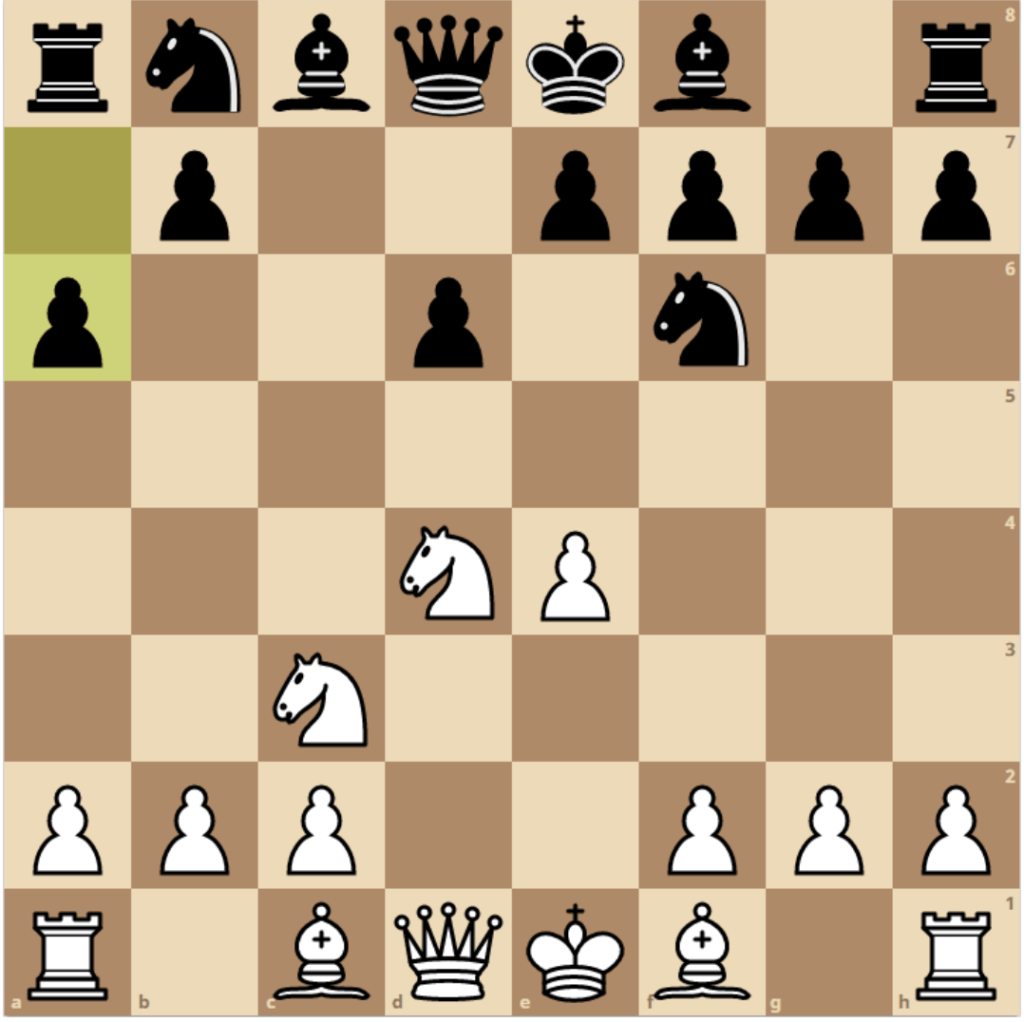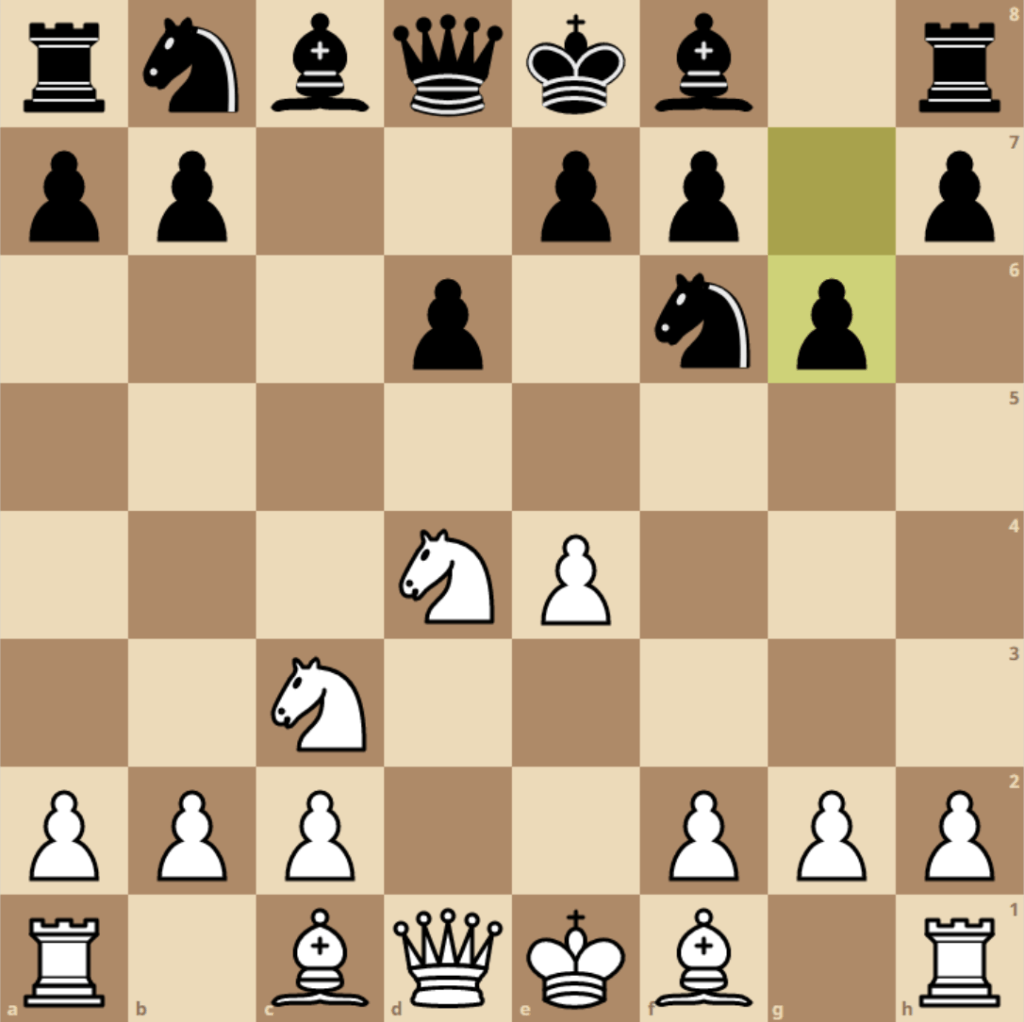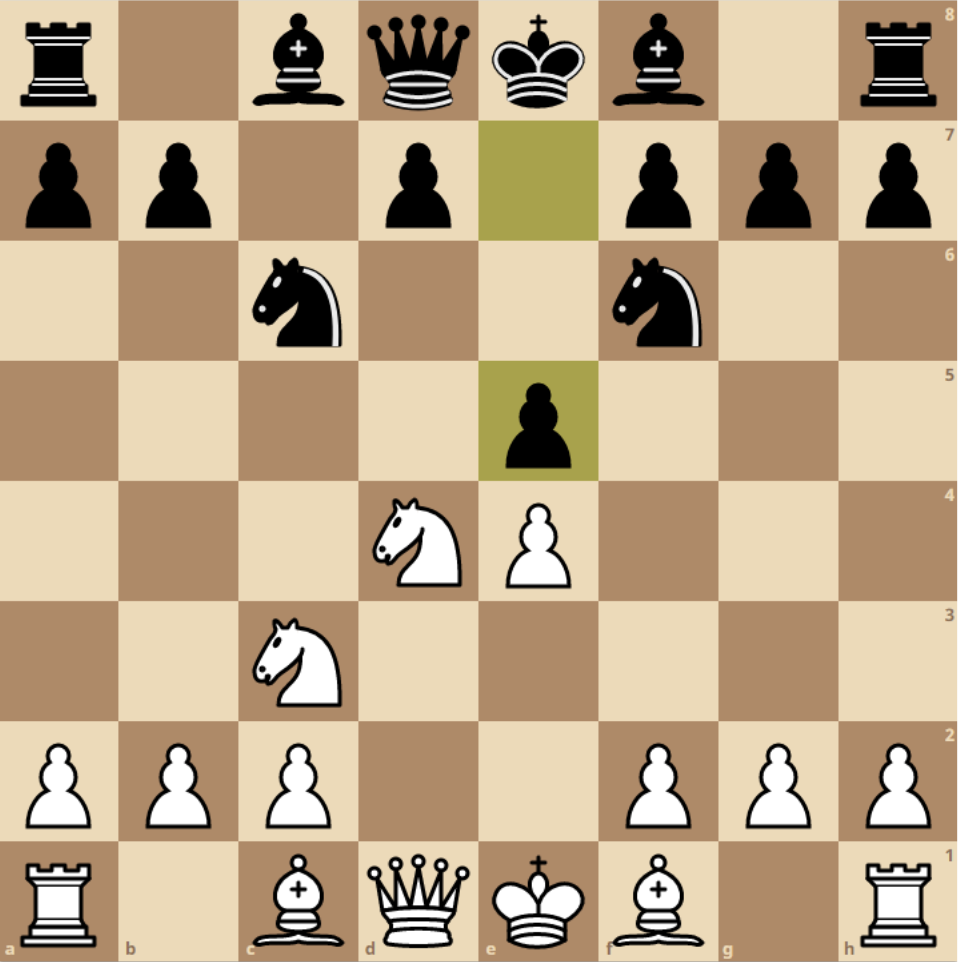Looking for an aggressive and dynamic defense against 1.e4? Why is the Sicilian Defense so strong?
Let’s take a look at the advantages and disadvantages of one of the most popular opening defenses in chess.
Why is the Sicilian Defense so strong?
A fierce opening for Black, the Sicilian Defense has flexibility, great counterattacking opportunities, and sharp tactics for conquering your opponent’s game.
The Sicilian Defense is probably the most popular opening defense against 1.e4, used by both beginners and grandmasters alike.
You may have used it at least partially in the past, but using it to its full extent can really give you a leg up on your opponent.
Let’s explore its key features and see why it’s so strong.
This quick video explains the Sicilian Defense visually which is the easiest way to learn it.
Introduction to the Sicilian Defense: Overview of the opening and key strengths
The Sicilian Defense opens with 1.e4 c5 with Black challenging White for control of the center.

By playing c5 with your opening move as Black, you’re looking to control the d4 and e4 squares.
Flexibility is one of the key strengths of the Sicilian Defense.
Depending on the variation being played, (I’ll cover some later in the article) Black’s pieces can be placed on different squares which allows for different strategies and tactics.
Another key strength of the Sicilian Defense is its active and aggressive play with counterattacking.
Advantages of the Sicilian Defense
Some of the key advantages of utilizing the Sicilian Defense are:
- Fighting for the center: By opening your defense with c5 to counter e4, Black immediately challenges for control of the center. The c5 pawn also indirectly attacks the d4 pawn limiting White’s options. As you can see in the video, it’s all about taking away what white wants to do early on. The second you change your opponents early tactics you can get them out of position.
- Tactical possibilities: With both sides aggressively fighting for center control, there are often opportunities for piece sacrifices, double attacks, etc. The video above touches on several of the variations of the Sicilian Defense that can be played based on White’s moves.
- Flexible piece placement: Because Black’s pawn is already on c5, its pieces are free to develop onto squares like d6, e6, g6, or b6. Black can begin developing its knights, or move pawns to allow lanes for bishops and an aggressive queen as well.
- Counterattacking opportunities: By being aggressive in fighting for center control, Black can create weaknesses in White’s position with timely counterattacks.
- High win percentage: Statistics show that the Sicilian Defense has a high win percentage for Black, especially with high level players due to the pressure put on White from the start.
Disadvantages of the Sicilian Defense: potential weaknesses and risks
No defense is without its weaknesses. Here are some potential downsides to playing the Sicilian Defense:
- Space disadvantage: With Black playing c5 and d6 early on, it can fall behind in developing other pieces because of lack of good squares to develop to.
- Risky pawn structure: Black’s aggressive pawns can create a pawn structure vulnerable to attack.
- Vulnerability to early attacks: Similarly, because of that aggressiveness, Black can not only find its pawn structure vulnerable, but other pieces can become vulnerable to early attacks by White as well
Common variations and strategies of the Sicilian Defense
How creative of a counterattacker are you? The Sicilian’s flexibility creates for several variations of its play.
Personally, I’m very much a visual learner. If you’re looking to explore any of these variations I’d definitely recommend looking them up on YouTube to see them in action.
- Najdorf Variation: The Najdorf Variation (1.e4 c5 2.Nf3 d6 3.d4 cxd4 4.Nxd4 Nf6 5.Nc3 a6) is one of the most popular variations of the Sicilian Defense.

- Dragon Variation: The Dragon Variation (1.e4 c5 2.Nf3 d6 3.d4 cxd4 4.Nxd4 Nf6 5.Nc3 g6) is another aggressive variation.

- Scheveningen Variation: The Scheveningen Variation (1.e4 c5 2.Nf3 d6 3.d4 cxd4 4.Nxd4 Nf6 5.Nc3 e6 6.Be2 Be7 7.O-O O-O 8.f4 Nc6) is a solid variation with Black aiming to build a strong pawn center.
- Sveshnikov Variation: The Sveshnikov Variation (1.e4 c5 2.Nf3 Nc6 3.d4 cxd4 4.Nxd4 Nf6 5.Nc3 e5) is sharp and tactical.

- Taimanov Variation: The Taimanov Variation (1.e4 c5 2.Nf3 e6 3.d4 cxd4 4.Nxd4 Nc6) is another flexible and solid variation.
Final Thoughts
The Sicilian Defense is strong and aggressive. By fighting for the center, you put immediate pressure on your opponent and give yourself a solid advantage to win.
What do you think? Is the Sicilian Defense a go-to open for you? What variation is your favorite go-to? Let me know in the comments section below! I love hearing what you have to say and I always respond!



Hi Eric,
Ah the Sicilian – a complex and aggressive opening that says “I’m not going to sit here quietly while you build your position, I’m coming for you!!!
I really do enjoy playing the Sicilian (with both colours) as more often than not, it leads to full-blown assaults on both sides of the board. It’s literally action everywhere, all at the same time, and I think that’s the most fun type of chess game there is.
Being from the UK I remember the battles Nigel Short had with Garry Kasparov in the 1993 World Championship Final with Nigel trying to destroy Garry’s Najdorf Sicilian by throwing literally everything at him! Those were the days!
Do you play the Sicilian as Black? Do you have a favourite variation?
Best wishes
John
It’s really cool how aggressive it is. I’ve been trying to incorporate all kinds of chess defenses and study them for their strengths and weaknesses lately. It’s actually fun looking at the game analytically and surprisingly when doing so and you’re pretty much ok with losing it’s crazy that you start winning more. Great comment!
I’ve played casual chess games with friends and family for years now. While it’s a fun game that I enjoy, I feel like there’s strategies and techniques that I’m missing out on. This article was a good introduction for me to at least one of those strategies. Thank you.
Can you tell me how the Sicilian Defense compares to other popular openings in terms of its effectiveness and the level of difficulty in mastering?
The Sicilian is easily one of the most popular chess defense openings. Probably one of the first learned by beginners. Thanks for the comment!
Really cool article. It brought back memories of when I played chess fairly regularly a fairly long time ago now and has rekindled my interest. I actually used bits of the Sicilian defense you described but I certainly didn’t know that the move had a name. Unfortunately, I don’t have my chess board anymore so the first step is to get one and the next will be to find a partner to play against. Thanks for the writeup
Get back on the board! 🙂 Thanks for the comment!